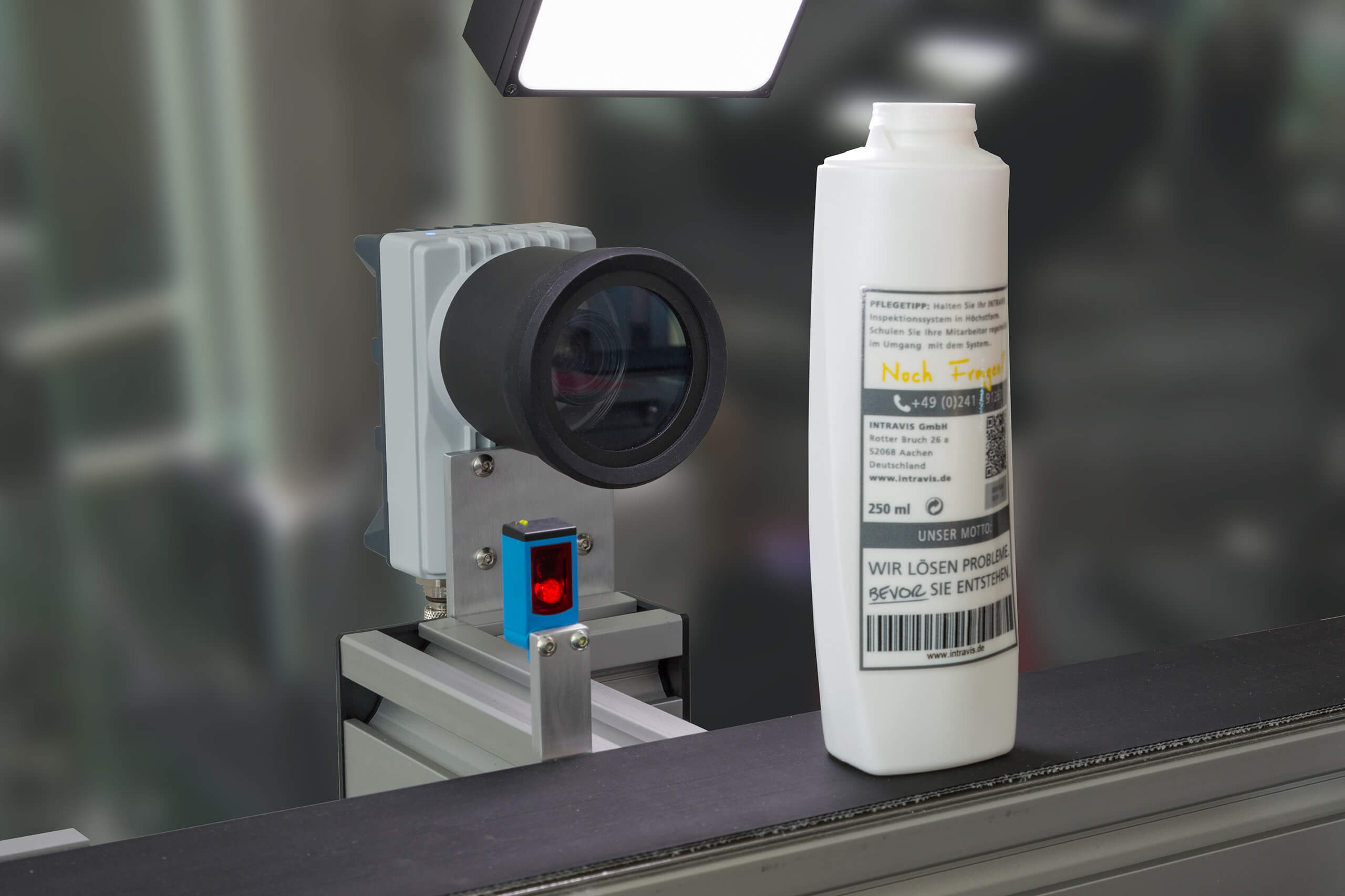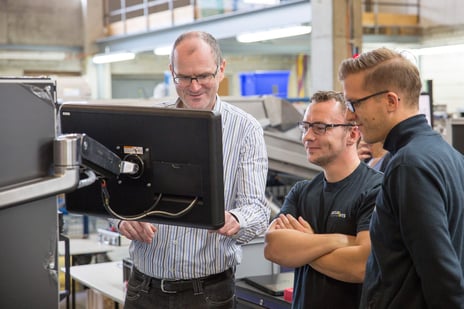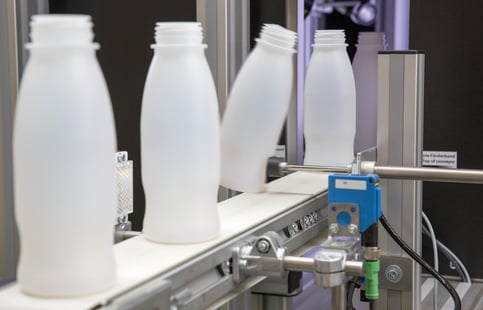Investment or luxury? – The true value of vision inspection systems

Many of our customers are already aware of the immense benefits that a vision inspection system offers. And still, we often meet company representatives at trade shows and conferences who are skeptical about the benefits of a system or have any concerns. In today's article, we want to pay tribute to typical doubts and find out what is true.
Why do I need an inspection system at all? I have enough employees who can check the products.
People have a limited concentration span at a stretch. After that, they need a break to get back to the same level of concentration. If someone works with a lack of concentration or is tired, they are more likely to make mistakes.
A vision inspection system, on the other hand, works constantly 24 hours a day, seven days a week, with the same accuracy.
In addition, people always make a subjective assessment of an error. If an error is clear, this does not play a decisive role. However, if a defect is within the limits of tolerance, the decision whether to reject an object can quickly become the subjective decision of the employee.
An optical inspection system always makes its decision, whether an object is defective, based on the same assumptions and with the same pre-set accuracy.
A vision inspection system seems to make sense. But the price is far too high for me!
The added value offered by a vision inspection system must be in proportion to its price. Typically, our customers say that a system must (and has) completely paid for itself after 24 months at the latest. If a complaint can be averted by using a vision inspection system, this is the case much more quickly.
The price of a vision inspection system is always based on the hardware and software installed and, ultimately, the task to be performed is a crucial factor. Do you always want to inspect the same product and only sort out the bad objects? Then a low-cost solution may make sense.
On the other hand, do you have frequent product changes, do you like to have many different criteria inspected, do you manufacture products with a wide variety of shapes and colors, or do you want to sustainably influence your production in real time based on comprehensively collected data? Then this is hardly feasible with a low-cost basic system. A high-quality system will give you greater added value in the form of faster changeovers to new, exceptional products, easy-to-understand operation, comprehensive information for production optimization and 24/7 support in the event of problems. This offers more flexibility in your production lines as well as important insights to increase your OEE.
The decisive factor must always be the return on investment, and it often turns out that high-quality systems are very inexpensive and deliver enormous added value in relation to their price.
Do you not need a well-trained expert to operate such a system?
There are differences here, too! There are solutions on the market that customers can program and integrate into the line themselves and on which everything can be set independently.
 This requires an expert who is familiar with the possibilities of such a system and can thus get the most out of it. However, if this expert is ill, on vacation or leaves the company, you suddenly lose years of expertise in quality control.
This requires an expert who is familiar with the possibilities of such a system and can thus get the most out of it. However, if this expert is ill, on vacation or leaves the company, you suddenly lose years of expertise in quality control.
In addition, such systems often do not come with any accessories, and you must take care of object tracking, rejection, ambient light shielding and the entire set-up yourself. It is also not possible to ensure that every operator operates the system in the same way. As a result, such systems have fundamental problems, so that they do not pass a validation process, for example.
At INTRAVIS, we have a different approach. We design our systems to be as easy to use as possible, because we know that operators today must manage a variety of tasks on the production line and that they are responsible for many different systems. We deliver turnkey solutions! This means that we handle the project from planning and installation through to acceptance and provide the corresponding documentation. An experienced INTRAVIS technician will take care of the initial commissioning and adjustment of the system to your products, so that you only have to switch on the system.
Comprehensive training for your operators ensures that all important system settings can be learned and applied. This enables your operators to quickly get the most out of the system. And later in the day, the operator is supported by guided steps and automatic functionalities in the software, for example during a product change.
Of course, we are also available to our customers 24/7 if they have any questions and our systems can be accessed remotely provided the customer agrees.
I cannot expect my operators to look after a further system in the line!
A well-adjusted inspection system does not require permanent support – it performs its work constantly according to the specifications made. Ideally, your inspection system will even automatically alert you when potential problems occur. This allows you to focus on other tasks with confidence and only turn your attention back to the inspection system when it is necessary. With our systems, product changes can also be carried out fully automatically, and the operator no longer must make any adjustments.
With a vision inspection system like this, I have far too many rejects.
The inspection system itself does not cause the rejects. It always operates within the framework conditions specified. However, if untrained or poorly trained operators set these framework conditions incorrectly, the system may reject too much. Therefore, regular training is recommended, especially for new operators.
 A second factor influencing the rejection rate is the correct maintenance of the system. An inspection system is a capital good. If a car is not treated with care, it will eventually stop running or require expensive repairs. Regular servicing of your inspection system extends its lifetime, helps to keep inspection performance at a consistently high level, and increase overall system availability.
A second factor influencing the rejection rate is the correct maintenance of the system. An inspection system is a capital good. If a car is not treated with care, it will eventually stop running or require expensive repairs. Regular servicing of your inspection system extends its lifetime, helps to keep inspection performance at a consistently high level, and increase overall system availability.
Finally, the condition of the production line itself has an influence on the performance of the inspection system. Poorly maintained conveyor systems and incorrectly adjusted side guides are one of the main reasons for a corresponding process failure, which is then noticed by the vision system because products are rejected. However, with powerful statistics and a meaningful error image memory, you can detect such events on the vision system and eliminate them immediately. In this way, you can ensure appropriate line availability and efficiency!
Conclusion
There are many concerns about vision inspection systems. However, if handled correctly and with a sensible concept behind the usage of the system, it can quickly overcome many of these concerns. It becomes clear that it can add real added value to any production, and therefore represents a useful investment in the efficiency of your production line.
Do you need an inspection system, or do you have questions about using one in your production? Please get in touch with our sales team and contact us via our contact form.